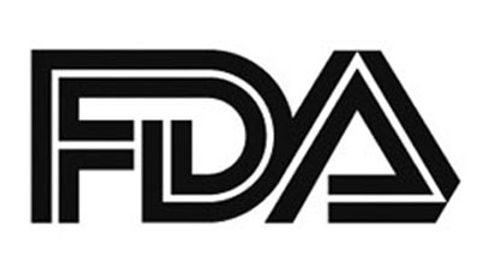FDA Fast Track Designation Granted to Novel ADC for Heavily Pretreated Platinum-Resistant Ovarian Cancer
The FDA has granted a fast track designation to a novel antibody-drug conjugate for the treatment of patients with platinum-resistant high-grade serous ovarian cancer who have received up to 3 prior lines of systemic therapy, or for patients who previously received 4 lines of systemic therapy regardless of their platinum status.

The FDA has granted a fast track designation to a novel antibody-drug conjugate (ADC) for the treatment of patients with platinum-resistant high-grade serous ovarian cancer who have received up to 3 prior lines of systemic therapy, or for patients who previously received 4 lines of systemic therapy regardless of their platinum status.1
“We are very encouraged by the FDA’s decision to grant us Fast Track Designation for our lead program XMT-1536, which has shown very encouraging activity and tolerability in our Phase 1 study in ovarian cancer to date. We believe this recognition underscores the high unmet medical need for a treatment for patients with platinum-resistant ovarian cancer,” said Anna Protopapas, president and CEO of Mersana Therapeutics, the developer of the ADC, in a press release. “With this designation in hand, we plan to be able to quickly advance through the administrative steps of XMT-1536’s development and bring forth a therapy for these patients as soon as possible.”
XMT-1536 is a first-in-class ADC that targets the sodium-dependent phosphate transport protein NaPi2b, which is broadly expressed in ovarian cancer and non–small cell lung cancer (NSCLC) adenocarcinoma and has limited expression in normal tissue.
The agent is currently being investigated in a proof-of-concept phase 1b trial in tumors likely to express NaPi2b (NCT03319628). The first-in-human study consists of a dose-escalation phase and an expansion phase.
The primary end point of the trial is the maximum tolerated or recommended phase 2 dose and the study will measure pharmacokinetics throughout.
According to an update of findings from the ongoing dose-escalation phase from March 2020, Mersana Therapeutics reported that encouraging clinical activity, in terms of responses and prolonged stable disease, was achieved with XMT-1536.2
The phase included 59 patients, which consisted of 37 with ovarian cancer, 11 with NSCLC, and 11 with other tumor types. All patients were heavily pretreated with a median of 5 prior lines of therapy (range, 1-10), including prior bevacizumab (Avastin) and PARP inhibition in the patients with ovarian cancer and platinum and immunotherapy in the patients with NSCLC.
Patients were treated with increasing doses of intravenous injection of XMT-1536 given once every 4 weeks, starting at a dose of 20 mg/m2.
Among 29 evaluable patients with ovarian cancer or NSCLC treated with doses of ≥30 mg/m2, partial responses were observed in 5 patients and stable disease in 14. In patients with higher NaPi2b expression treated at doses above 30 mg/m2, the disease control rate (DCR) was 73% (11 of 15) compared with a DCR of 55% in those with lower NaPi2b expression (5 of 9).
Based on findings from the dose-escalation portion, the protocol for the expansion portion was changed in January to treat newly enrolled patients at 43 mg/m2 rather than 36 mg/m2. In the escalation phase, among patients treated at the 43 mg/m2 dose level (n = 7), partial responses were seen in 2 patients and stable disease in 4, for a DCR of 86%. No dose-limiting toxicities were reported in the 43 mg/m2 dose level cohort.
The expansion phase of the study included an ovarian cancer cohort (n = 27) and an NSCLC cohort (n = 7). In the ovarian cohort, 20 patients were evaluable for response and demonstrated a DCR of 80%, which included complete responses in 2 patients with high NaPi2b expression and responses in patients with platinum-resistant disease. The majority of the cohort is continuing to receive treatment as of data cutoff.3
The most common treatment-related adverse events (TRAEs) between the 2 phases were grade 1/2 nausea, fatigue, and headache; the most common grade 3 event was transient increase in aspartate aminotransferase levels. No grade 4/5 TRAEs were reported and no cases of grade ≥3 neutropenia, peripheral neuropathy, or ocular toxicity were observed.
References:
1. Mersana Therapeutics Receives FDA Fast Track Designation for XMT-1536 for the Treatment of Patients with Platinum-resistant Ovarian Cancer. News release. Mersana Therapeutics. August 11, 2020. Accessed August 11, 2020. https://bit.ly/33Rka8a
2. Mersana Therapeutics Reports Updated Data from the XMT-1536 Phase 1 Dose Escalation Study. News release. Mersana Therapeutics. March 30, 2020. Accessed August 11, 2020. https://bit.ly/3kDozkG
3. Richardson DL, Barve MA, Strauss JF, et al. Phase I expansion study of XMT-1536, a novel NaPi2b-targeting antibody-drug conjugate (ADC): Preliminary efficacy, safety, and biomarker results in patients with previously treated metastatic ovarian cancer (OC) or non-small cell lung cancer (NSCLC). J Clin Oncol. 2020;38(suppl 15):3549. doi:10.1200/JCO.2020.38.15_suppl.3549
Novel Therapies and Combinations Lead the Way in Women’s Cancers in 2024
January 3rd 2025Potential practice-changing therapies in gynecologic cancer include the emergence of carboplatin, paclitaxel, and PD-1 blockade, or the use of fam-trastuzumab deruxtecan-nxki in endometrial cancer.
Read More